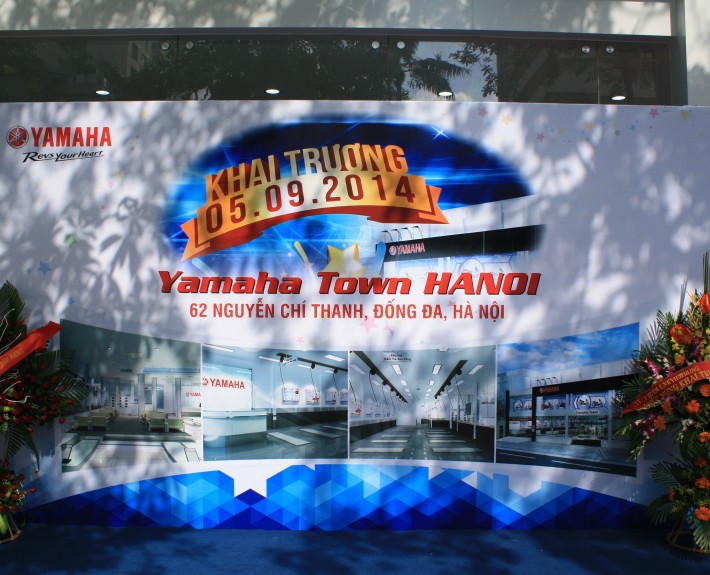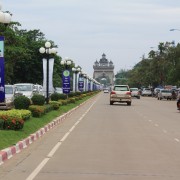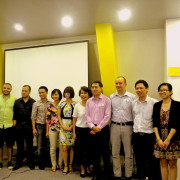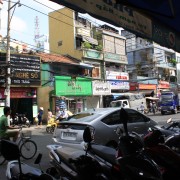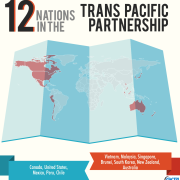Yamaha Town Hanoi
On September 5 Yamaha Town Hanoi opened its doors to the public at 62 Nguyen Chi Thanh in Dong Da District, Hanoi. The opening of the showroom is unique because it is the only official Yamaha Motors Vietnam showroom in Hanoi—although a potential local partner has the option to takeover the management of the facility, which includes a state-of-the-art service area on the first floor (ground floor for the Americans), and office space on the second floor.
It took about a year to open this particular location but depending on a local partner’s resources (and relationships) and taking the dealership location into consideration, it can take between three and 12 months to open up a new Yamaha Motors Vietnam dealership.
Across Vietnam there are approximately 500 showrooms where Yamaha Motors products can be found in—a staggering figure considering that Yamaha Motors Vietnam has been operating here for 15 years. Yamaha Town Hanoi is the latest location to join the stable of other Yamaha Town locations throughout Vietnam. There are Yamaha Town locations in the cities of Can Tho, Vung Tau, Phan Thiet, Nha Trang, Da Nang, and Hai Phong. In the entire country, Hanoi is the second-largest market for Yamaha Motors Vietnam as the brand is more popular in Saigon.
At the opening ceremony, the director of Yamaha Motors Vietnam, Mr. Masaru Ono, spoke about grasping the needs of each customer segment and he also set the development of marketing as an urgent task. Mr. Ono laid out how Yamaha Motors Vietnam has a specific strategy to set the highest standards for its customers—something that will help Yamaha drive sales in the current market and in the future.
It’s currently a particularly difficult time in the motorcycle industry in Vietnam due to saturation, some recent economic uncertainty, and a rising interest in cars from consumers with increasing purchasing power. Currently, about 61% of the vehicles in Vietnam are motorcycles. But cars will not be able to fully replace motorcycles due narrow passages, housing density, and high vehicle tax barriers.
FZ150i brand ambassador, singer Tuan Hung was present at the event and delivered some remarks about his opinion on the Yamaha brand and its products. Mr. Hung mostly spoke about his affinity for Yamaha’s sporty designs and how he thought they contributed to the brand’s success here in Vietnam. Afterward, fans were able to take photos with him in the showroom and outside on the sidewalk.
During the event there were different elements of Yamaha operators, each fulfilling a different role: promotion girls to attract attention to the products, ao dai girls to greet the event guests, Yamaha Grande girls to parade through Hanoi, and sales girls to answer questions from potential customers.
The event wrapped up with a parade of at least twenty Yamaha Grande scooters led by Mr. Masaru Ono, who also had the pleasure of owning the first motorcycle sold at the new dealership. He then proceeded to don proper riding gear in front of the showroom and took off in a southerly direction through the streets of Hanoi.
Yamaha’s Local Operations
Honda is Yamaha’s main competitor in Vietnam. Whereas Honda can leverage its economies of scale, and expertise in the automobile and other markets, Yamaha focuses specifically on motorcycles segments and connecting with its customers.
One way that Yamaha Motors Vietnam engages its customers is through a customer relations management (CRM) program based on three month intervals. It uses call centers to directly contact their customers in order to remind them of service dates and intervals. The service technicians also use stickers that are placed in the storage compartment of motorbikes (under the seat) so when getting gas the customers are reminded of the next service date as well. Because of these different methods of engaging consumers, the average Yamaha product has a seven year lifespan.
In terms of training and customer service, Yamaha Motors Vietnam’s technicians go through a training program to eliminate technicians with poor attitudes and/or a lack of soft skills. This training program ensures that graduated technicians will be able to deliver consistent experiences at every showroom, thereby resulting in satisfied customers. In order to be selected for the training program, technicians need to have at least a basic understanding/basic training of technical know-how.
Yamaha Motors, like many corporations, has a global strategy but largely relies on country organizations like Yamaha Motors Vietnam to implement local initiatives. For example, Yamaha Motors Vietnam has a specially modified caravan that goes into small towns across Vietnam. During local weekend events thousands of Yamaha riders will attend and receive free oil changes and other perks.
These local community support events are important because some motorcycle (and bicycle) riders do not perform basic maintenance on their vehicles, resulting in a smokescreen behind them due to burning oil or screeching brakes when stopping–so these sort of initiatives are imperative to keep the products functioning properly on the roads. Nine complimentary oil changes are included in the sticker price and every Yamaha product that is sold has a three-year warranty or coverage for up to 30,000 kilometers—whichever comes first.
All of Yamaha Motors Vietnam’s production is in northern Vietnam. Yamaha Motors Vietnam has about 7,000 factory workers spread across three factories in the surrounding areas of Hanoi. One factory produces spare parts and two are dedicated to the assembly of Yamaha Motors products. Additionally, about 200 marketing staff work out of an office in Hanoi.
A 15 Year Legacy and Positioning for the Future
When Yamaha entered the Vietnamese market, it initially made a big push in Saigon because the surrounding cities would and did end up following the trendsetting Saigonese. In Vietnam, Yamaha Motors Vietnam is positioned as sporty brand, targeting the young males consumer segment. Since Yamaha entered the Vietnamese market in 1999, it has used its sporty designs, sporty engines, and key local influencers to attract and maintain the attention of young Vietnamese men. Its tagline: “Revs your heart” and its byline on advertising, “Fun injected” (a play on words for “fuel injected” or the primary way fuel is delivered into engines), reflect this sporty and playful brand positioning.
Other foreign motorcycle/scooter brands have an easier time to target Vietnamese consumers because of consumer perceptions of higher-quality foreign products. For example, Piaggio is a go-to brand for women interested in scooters because Vietnamese consumers prefer American and European brands over even some foreign Asian brands.
Since Yamaha is not viewed as a luxury brand in the Vietnam market, it needs to focus specifically on certain motorcycle segments and leverage its competitive advantages. In part, this foreign preference is due to a desire for larger engines and models—which can present some challenges for operators with smaller bodies who are essentially sacrificing vehicle control for image. This example is one key difference that distinguishes the Vietnam market from even other markets in Asia.
In fact, Vietnamese consumers are so different compared to other consumers in Asia-Pacific region that Yamaha launched a product specifically for the Vietnam market, the Yamaha Grande. Previously, it had tested some Indonesian models in Vietnam but they were not that successful with consumers. Between markets, several elements can be changed such as the engine timing, shift points, throttle sensitivity, etc. For example, in other markets such as Malaysia, drivers like to go (and can go) faster on roads (partly due to better infrastructure).
The Yamaha Grande is specifically designed for women who like scooters. It took two years to develop the Grande, which was released over the summer. With the Grande, Yamaha now offers nine models to serve the Vietnamese market. For its Yamaha Grande marketing campaign, Yamaha enlisted prominent celebrities such as Ho Ngoc Ha to target and connect with women. In its message, there is a clear Paris influence (promoting foreign luxury elements) that is evident from its video promotion to the outfit on its Yamaha Grande girl riders—all of which is done in-house.
We were surprised to find out that the company puts on over 200 events per year—and it’s usually closer to 300 events per year with about 20 big events such as the grand opening of the showroom. Recently, Yamaha teamed up with Elite Model Look Vietnam 2014 in a quest to find the best model talent in Vietnam. During a “Thanks Party” held in Hanoi, the Yamaha Grande was prominently featured in the event, including a $20,000 version outfitted with Swarovski crystals.
The exposure from Elite Model and Fashion TV (who had correspondents at the party) will positively impact Vietnam’s image on local, national, and international levels by instilling national pride in Vietnamese and exposing new people around the world to the beauty and potential of Vietnam. If Yamaha continues these clever kinds of cross-promotional events then it will surely be able to capture the hearts of women in addition to its success of attracting thrill-seeking men in Vietnam and beyond.

